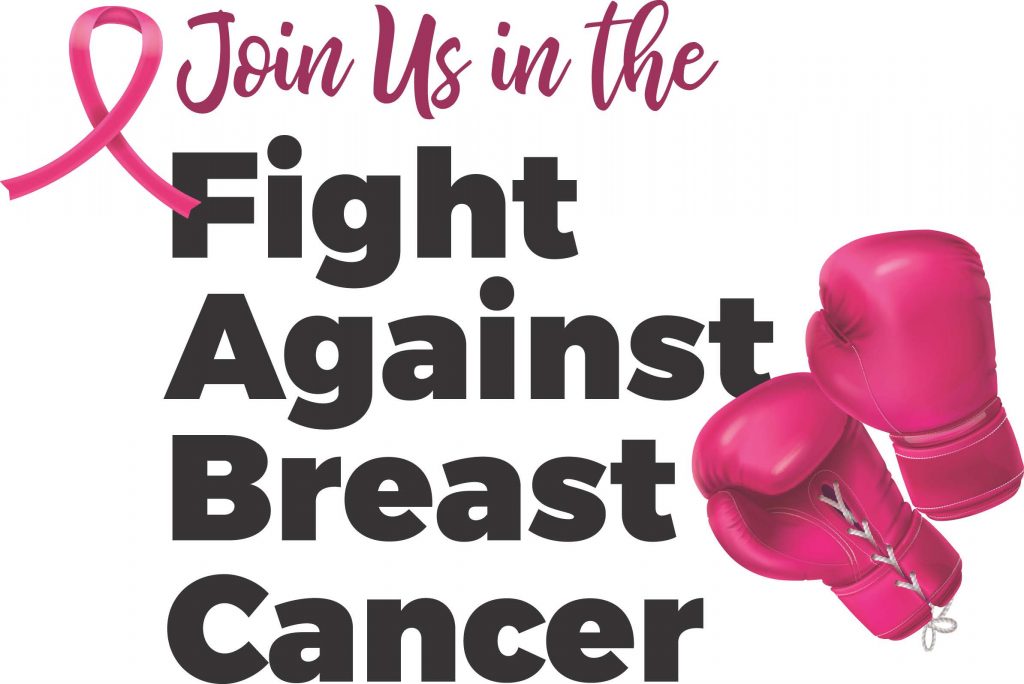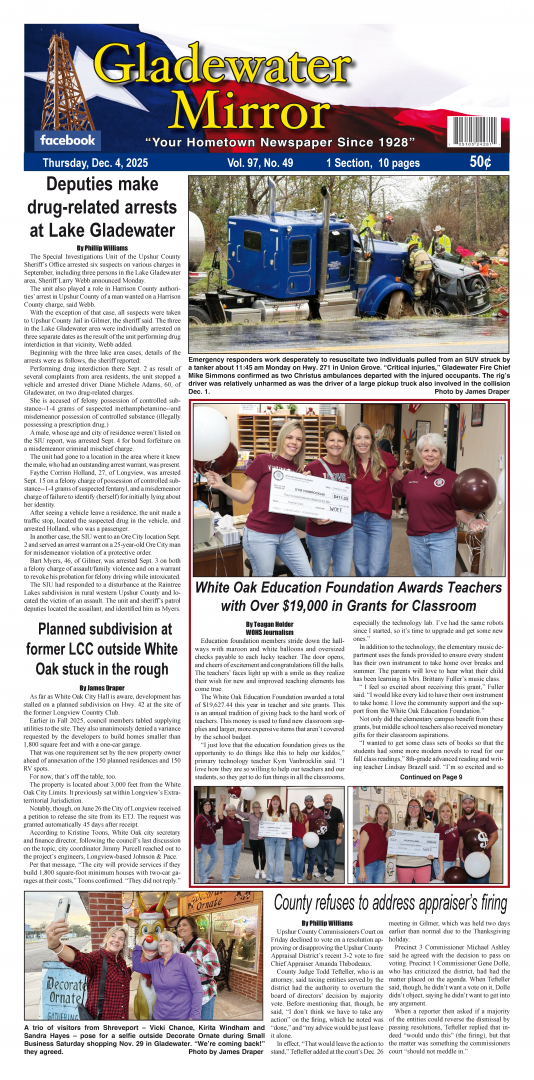 October is Breast Cancer Awareness Month — a time when the disease affecting hundreds of thousands of American women each year gets renewed attention.
October is Breast Cancer Awareness Month — a time when the disease affecting hundreds of thousands of American women each year gets renewed attention.
American women have a one in eight chance (12.9%) of developing breast cancer during their lifetimes, while American men have a one in 800 chance (0.13%), according to the National Institutes of Health’s National Cancer Institute.
Each year about 264,000 women are diagnosed with breast cancer, and approximately 42,000 women die of the disease, the Centers for Disease Control and Prevention (CDC) reports. (About 2,400 men are diagnosed with breast cancer each year and some 500 men die from it annually, CDC data shows.)
Since breast cancer is more com- monly found in women aged 40 and up, medical professionals and orga- nizations recommend routine breast cancer screenings for middle-aged and senior women. This includes mammograms — a breast cancer screening method that’s led to age-based debate among experts.
There are also important breast cancer risk factors to note, say experts.
“Having one first-degree rela- tive with breast cancer doubles a woman’s risk,” said Dr. Kathleen Ki- ernan Harnden, director of breast oncology at the Inova Schar Cancer Institute in Annandale, Virginia.
Other high-risk factors include a family history of breast cancer, a known genetic mutation or a previous breast biopsy, according to Harnden.
Given this, Harnden said there are key questions all women should ask themselves before they request a mammogram consultation or ap- pointment:
Do I have an increased risk of breast cancer and how can I reduce my risk for breast cancer? Will my mammogram be three-dimensional (3D) or two- dimensional (2D)?
Harnden recommends 3D mam- mography over 2D because multiple images are taken from different angles, which may make breast tissue analysis clearer.
Here’s a deeper dive into these topics.
What is breast cancer?
Breast cancer is a disease that occurs in breast tissue when
cells in the breast “change and grow out of control,” according to MedlinePlus, an online health information service produced by the U.S. National Library of Medicine.
The cells that cause breast cancer usually form a tumor — an abnormal mass of tissue.
Cancer cells and cancerous tumors (malignant) are danger- ous because they can disrupt organ functions and kill healthy cells if left to spread, which can cause serious harm or death if left untreated, according to a report from MedicalNewsToday, a medical news website owned by Healthline Media.
Breast cancer is the second most common cancer in women after skin cancer, says the National Cancer Institute.
Breast cancer diagnoses are extremely rare in teens. Teen girls between ages 15 and 19 have an incidence rate of 0.2 per 100,000, the CDC indicates.
Girls younger than 15 don’t have a calculated breast cancer incidence rate because the CDC suppresses data when there are fewer than 16 cases, which the agency notes on its “United States Cancer Statistics: Data Visualizations” webpage.
Breast cancer incidence rates steadily increase with age, but it remains low for women under age 40, CDC data shows. While not all experts agree on whether women under age 40 should receive mammograms, young women in their 20s and 30s have been diagnosed with breast cancer, according to incidence data published by the CDC, which dates back
to 2019.
Women between the ages of 20 and 24 have a breast cancer
incidence rate of 1.8 per 100,000.
The incidence rate jumps to 10.5 per 1000,000 women, 30.1
per 100,000 women and 64.8 per 100,000 women, for women ages 25 to 29, 30 to 34 and 35 to 39, respectively.
Breast cancer incidence rates spike from ages 40 to 74, the CDC’s data shows.
The incidence rate for middle-aged women steadily in- creases every four years. For example, women ages 40 to 44 have a breast cancer incidence rate of 131.7 per 100,000 women while women ages 55 to 59 have a breast cancer incidence rate of 273.3 per 100,000 women.
Breast cancer diagnoses are even more common in senior women. The CDC’s data show women from age 60 to 64 have a breast cancer incidence rate of 339.8 per 100,000 women while women from age 65 to 69 have a breast cancer incidence rate of 425.2 per 100,000 women and women from age 70 to 74 have a breast cancer incidence rate of 475.8 per 100,000 women — the highest of any age group.
Declines in breast cancer incidence rates start to happen after age 75, according to the CDC.
What is a mammogram?
Mammography is a common breast cancer screening
method that uses radiation to detect physical abnormalities in breast tissue. (iStock)
Mammograms are an X-ray procedure that helps doctors detect early signs of breast cancer, according to the CDC.
The machines used to conduct mammograms have plastic plates that flatten breasts, so X-ray images can be taken and analyzed by radiologists for abnormalities.
Mammogram results are typically reported in a few weeks, according to the CDC.
Women with dense breasts have a higher chance of getting breast cancer, the health agency reports, but some women have higher-density breasts if they’re younger in age, pregnant or breastfeeding, taking hormone replacement therapy or have a lower body weight.
“Dense tissue can hide cancers,” the CDC wrote in a “What Does It Mean to Have Dense Breasts?” report.
“Fibrous and glandular tissue looks white on a mam- mogram. So does a possible tumor,” the CDC continued. “Because it’s hard to tell the difference between a tumor and dense breast tissue on a mammogram, a small tumor may be missed.”
Dr. Mona Jhaveri, cancer researcher and founder of Music Beats Cancer, a creative nonprofit organization in Washington, D.C., told Fox News Digital that dense breast tissue occurs in half of all women ages 40 and up.
“It’s well known that detecting cancer lesions in women with dense breast tissue can be difficult,” Jhaveri said. “Mam- mography is the standard of care for breast cancer screening, [but] it certainly has its risks and limitations.”
Potential risks associated with mammography screening include overdiagnosis, false positives, anxiety and radiation injury, according to a study published in the National Library of Medicine.
The U.S. Preventive Services Task Force — an independent, volunteer panel of national experts in disease prevention — says women who place a higher value on the potential benefit of mammography over potential harm can choose to begin breast cancer screening once every two years between ages 40 and 49 years.









